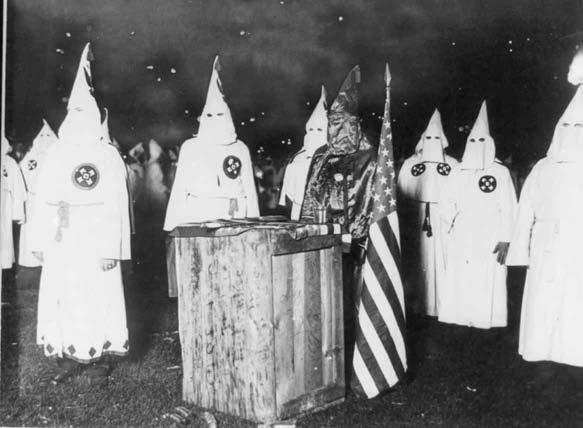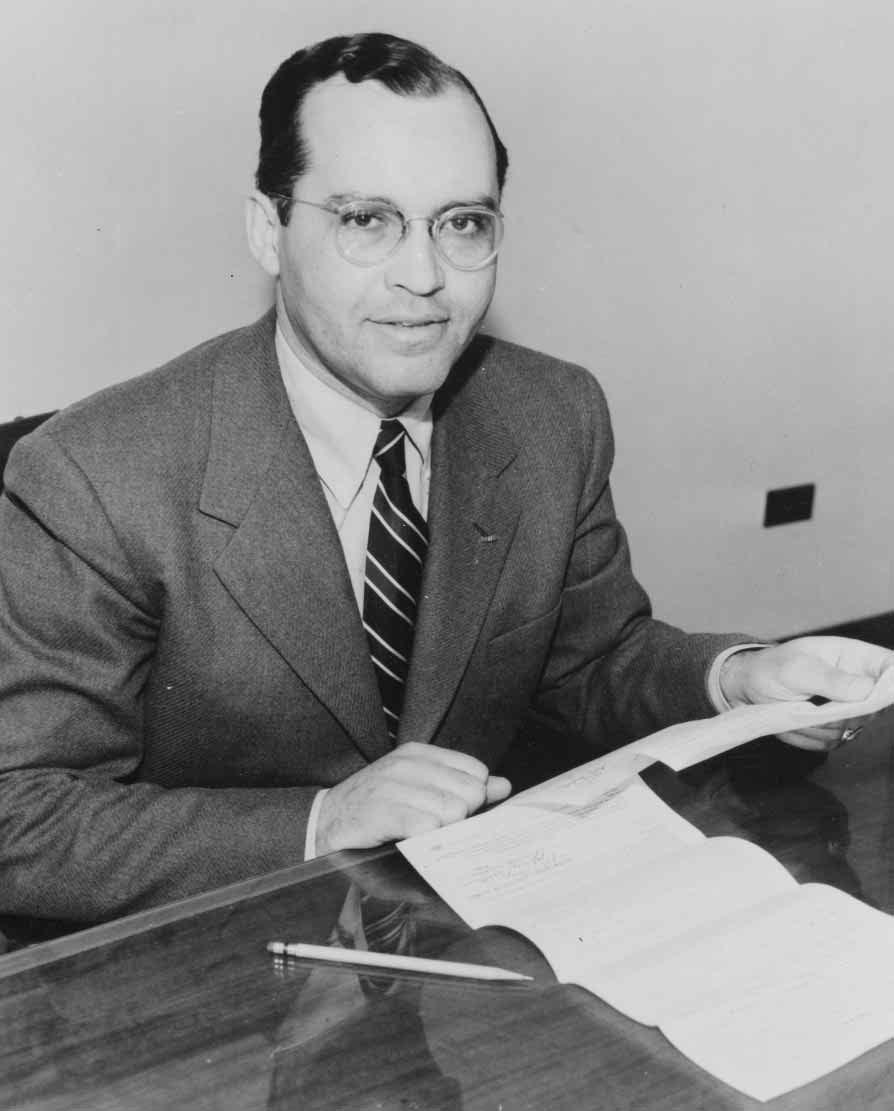
24 minute read
We Belong in Washington Park
African American lawyers and businessmen led the long struggle against racially restrictive covenants.
Advertisement
TRUMAN K. GIBSON JR.
It’s a moment pregnant with possibilities. For the black family in Lorraine Hansberry’s play A Raisin in the Sun, a yearning for a better life inspires a hope of a warm welcome, a gesture of acceptance, and an expression of neighborly feeling from their soon-to-be neighbors who are white. For us in the audience, foreboding makes us almost want to avert our eyes as we know that something quite different from the family’s aspirations is about to befall them. Still, thanks to the power of Hansberry’s words and the depth of the performances by the actors (Sidney Poitier, Ruby Dee, Claudia McNeil, and the others in the movie adapted from the 1959 play), we too are stunned when the bland young man from the Clybourne Park Improvement Association reveals that the white neighborhood wants to buy back from the black family the house on which they’ve just made a down payment. “You people” is the phrase he uses over and over, working himself up to his point: “I want you to believe me when I tell you that race prejudice simply doesn’t enter into it. It’s a matter of the people of Clybourne Park believing, rightly or wrongly, as I say, that for the happiness of all concerned that our Negro families are happier when they live in their own communities.”
The family is crushed. We in the audience are repulsed by the soulless ugliness of the moment. Yet, the reality that served as the inspiration for this play was much harsher. Whereas the black family in the play confronted a 1950s white neighborhood that wanted to buy them out, that was in effect trying to talk them out of coming into the area by offering a quick profit on the home, Carl Hansberry,
This article is excerpted from Knocking Down Barriers: My Fight for Black America by Truman K. Gibson Jr., recently published by Northwestern University Press. Gibson was the civilian aide to the secretary of war during World War II, a member of two presidential advisory committees, and the first African American to be awarded the Presidential Medal of Merit. Above: Gibson as a young attorney in Chicago.
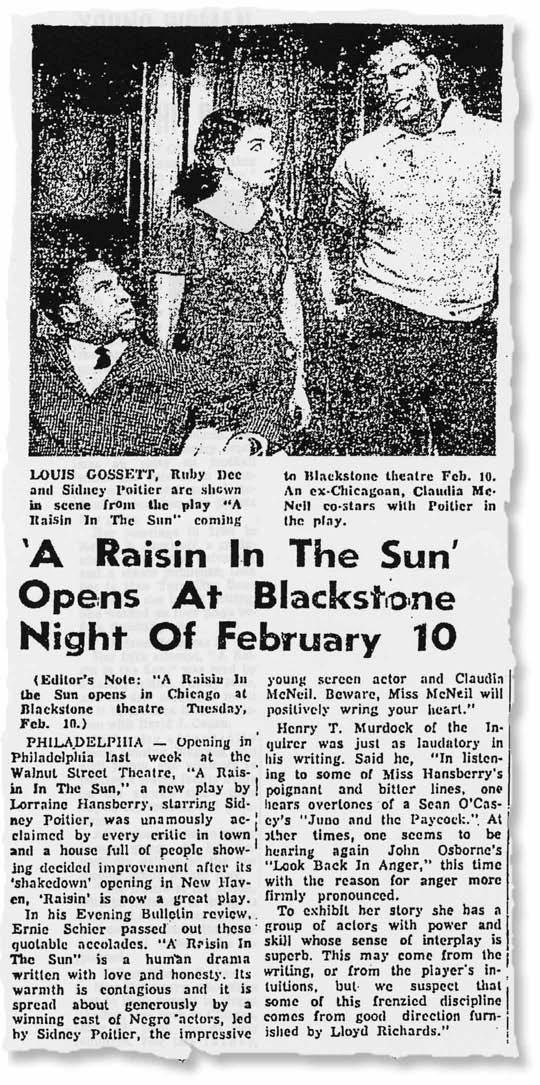

Lorraine Hansberry (left) received worldwide acclaim (right) for her play A Raisin in the Sun, inspired by her father’s fight against racially restrictive covenants. Below: The original Raisin cast featured Louis Gossett, Ruby Dee, and Sidney Poitier.
As African Americans moved into formerly all-white neighborhoods, many became victims of bombings. This map from a 1922 study by the Chicago Commission on Race Relations shows homes bombed during race conflicts over housing between 1917 and 1921.

Lorraine’s father, faced the full weight of a legal system out to deny him by force of law the right to move his family into a white neighborhood during the Depression.
Chicago in the first third of the twentieth century was of two minds about its burgeoning black population. While its industries, straining to meet the production demands of World War I, had thrown open their arms to the African Americans migrating from the South, white Chicagoans did not turn out the welcome mat for blacks seeking to put down roots in their neighborhoods. The city’s political power structure struggled to contain African Americans within the already established black belt on the South Side. A bomb, not a welcome wagon, all too often announced the arrival of a black family to a previously all-white block. Still, racial violence was not an attribute by which any city wanted to be known. Chicago’s city fathers and business community had recoiled in horror from the bloody 1919 race riot, and law-abiding Chicagoans were not happy with the brand of lawlessness burned on the city’s good name by Al Capone and other gangsters during Prohibition.
So a nonviolent way had to be found to keep blacks out of white neighborhoods. Indeed, the bombings abated as the city adopted a more effective and legalistic approach—the restrictive real estate covenant. Now, restrictive covenants were not, and are not, unusual in real estate contracts to protect property values. They lay down parameters on, for instance, right of way, utilities, or the number of people who can occupy a structure. Applying the covenants to race—in effect declaring that blacks had to be kept out of communities to preserve home values—became widespread in the 1920s.
A typical example was the racial covenant for the Washington Park subdivision on Chicago’s South Side, written in 1927. This was the covenant that Hansberry challenged in the mid-1930s. This document prohibited the sale, rental, and leasing to Negroes of residential property in a defined area. The crude language of the covenant defined a Negro as “every person having oneeighth part or more of negro blood, or having any appreciable mixture of negro blood, and every person who is what is commonly known as a ‘Colored person.’” The
Chicago’s devastating 1919 Race Riot created a rift between African American and white communities that lasted for decades.

Earl Dickerson, legal counsel for the NAACP, took on Carl Hansberry’s case as he challenged the racial covenant of the Washington Park subdivision on Chicago’s South Side.
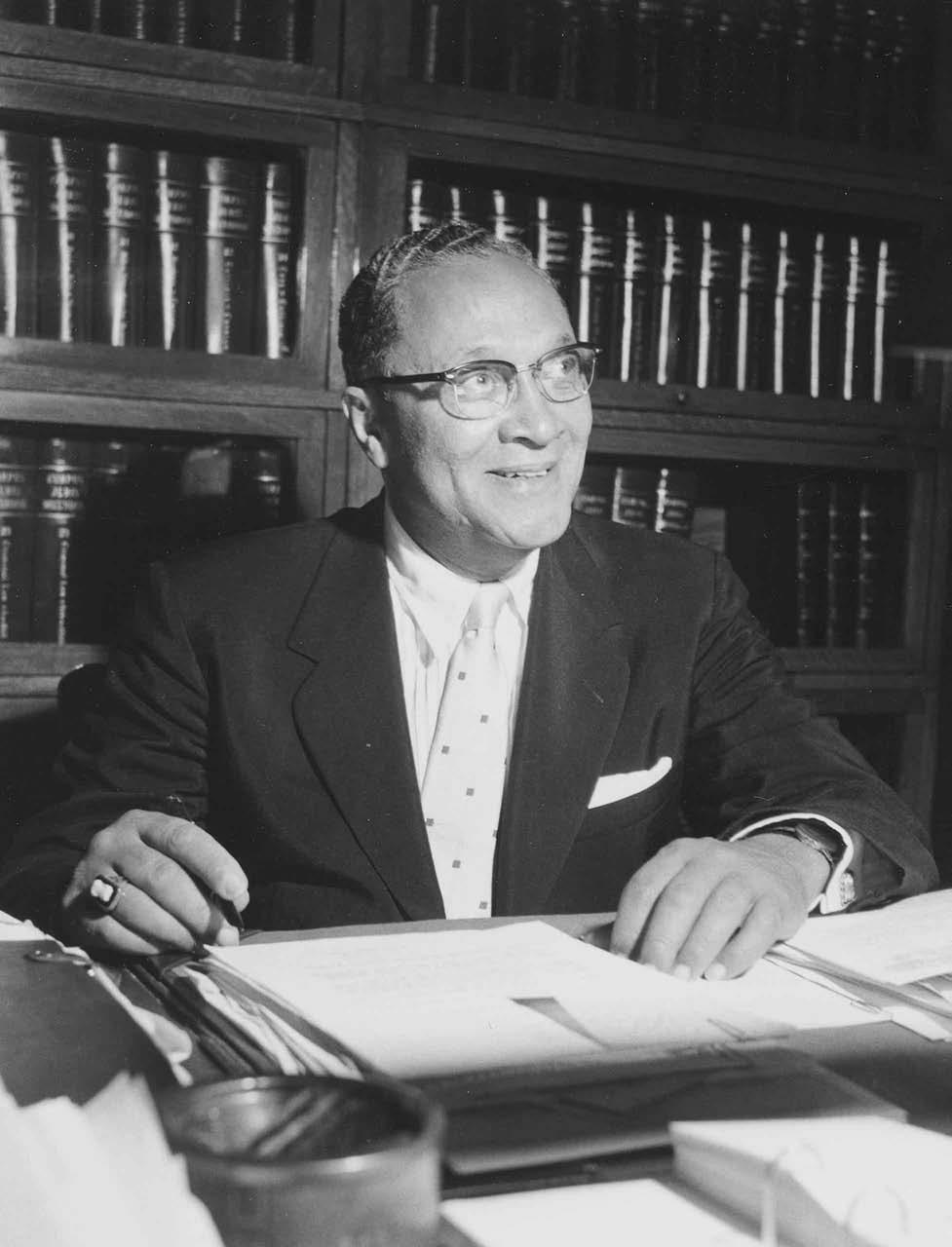
Businessman Harry Pace (below) tried to develop property in Washington Park (above), and became part of the Hansberry case.
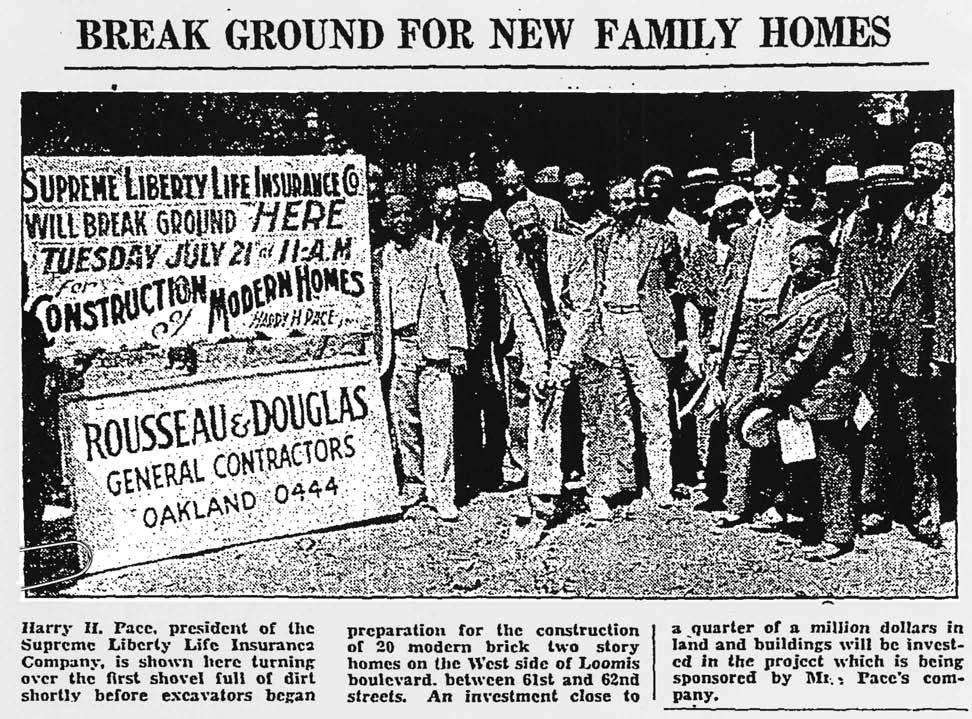
only exceptions to the ban on black occupation of living quarters in a covenantrestricted neighborhood were African Americans employed as janitors, chauffeurs, or house servants, who could live “in the basement or in a barn or garage in the rear, or . . . servants’ quarters.”
Hansberry was an astute businessman who had found prosperity in buying three-flat apartment buildings and converting them to ten-flat kitchenette structures. The sturdy homes and apartment buildings in the Washington Park subdivision appealed to his business instincts. He set his sights on a three-flat brick building at 6140 South Rhodes Avenue, put down earnest money, got a mortgage, and proceeded to move his wife, Nannie, and their four children into the first-floor unit.
Knowing that he was in for a hard legal fight, Hansberry and his attorney, C. Francis Stradford, approached the NAACP. The star legal counsel for the NAACP was Earl Dickerson, also general counsel for my father’s firm, Supreme Liberty Life Insurance. Dickerson already had made a name for himself as an activist in the NAACP and the liberal Chicago Lawyers Guild, put his stamp on the black business community through his work as vice president and general counsel for the Supreme Life firm, earned a reputation as an effective litigator, and, from his service as an assistant Illinois attorney general, gained a keen insight into the workings of the courts and the power structure of Chicago. He was a natural selection for anyone wishing to challenge the restrictive racial covenant.
Dickerson presented Hansberry’s case to the insurance company, and it readily agreed to put up the money for the forty-four-hundred dollar note on the property and to fund the legal challenge to these bigoted contracts. Supreme made that mortgage with eyes wide open to the risks and expense of a long legal fight. My father chaired the executive committee that approved the mortgage for Hansberry to buy the property. Although the decision was
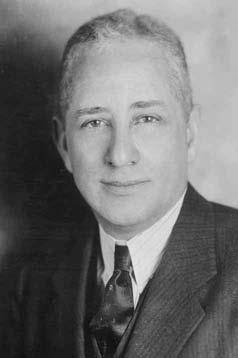
made with little discussion, my father, Dickerson, and the others knew that they faced an uphill fight. Only a few years earlier, the U.S. Supreme Court had ruled in favor of racial covenants. Still, the overwhelming sentiment was in favor of another challenge. Irvin C. Mollison and I were recruited for the struggle as pro bono attorneys.
Hansberry’s property wasn’t the only stab at black ownership within the Washington Park subdivision. My father’s business associate, Harry Pace, also bought a building nearby, and that became part of the Hansberry case.
Independent of our action, a black physician named James Lowell Hall bought a dwelling west of the building at Sixtieth Street and Vernon Avenue in which my parents rented an apartment. Such was the arbitrary and capricious nature of the covenant that while our building was not covered by it, the one Hall bought was.
Hansberry and Hall both moved their families into the buildings and were promptly evicted on the basis of the covenant. As evidenced by Raisin, that made a powerful impression on Lorraine, who couldn’t have been more than seven or eight years of age at that time. The upheaval must have been traumatic. Hansberry lived well. He already owned a very pleasant home on Forestville Avenue, a short street of houses for the affluent between Forty-fifth and Forty-seventh Streets. Almost overnight, she was uprooted from that familiar home, moved into the ground-floor apartment of the three-flat building on Rhodes, and then hustled back to Forestville Avenue after eviction. No man puts his family through that lightly. The compelling factor for Hansberry that made that bruising turmoil necessary was the goal of busting the covenant.
After forcibly getting Hansberry’s family out of the building, the Woodlawn Property Owners Association, as the covenant’s governing body was known, filed papers in circuit court to force the real estate broker to relinquish ownership of the building. The legal battle had been joined. At the center of it, plotting strategy and articulating the case against the covenant, was Dickerson.
The Woodlawn neighborhood (above) became the site of legal battles over racially restrictive covenants.
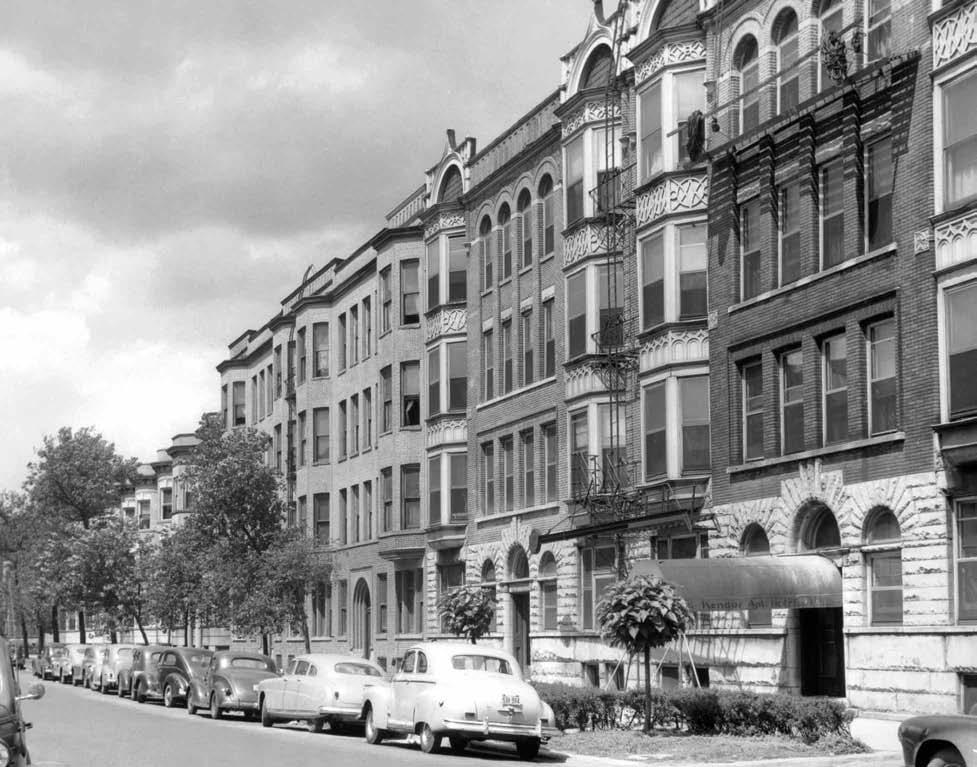
The Woodlawn Property Owners Association was the racial covenant’s governing body. As this 1929 letter indicates, the association promoted the “work of restricting Woodlawn to white people.”
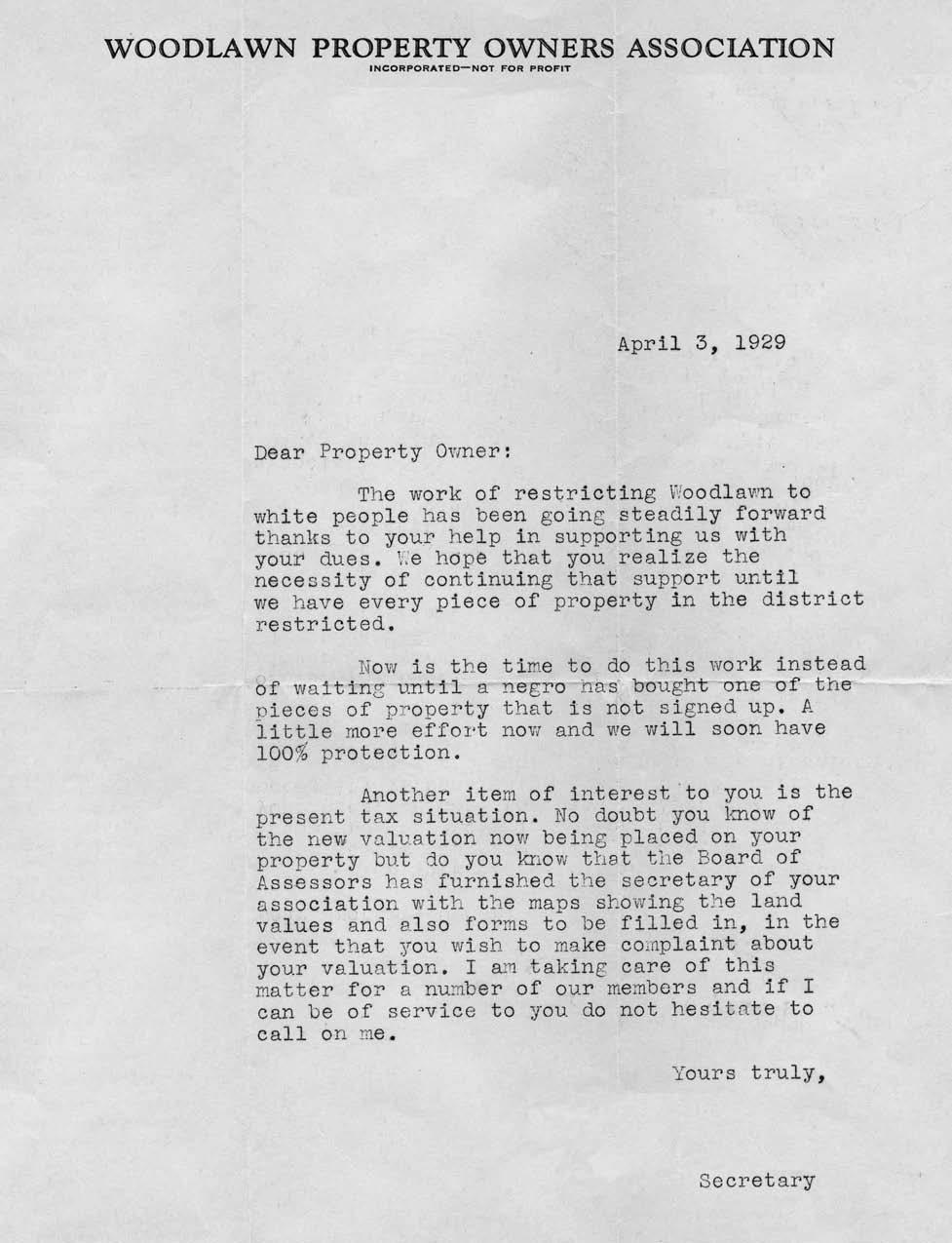
Restricted to certain neighborhoods, Chicago’s African American community created a “Black Belt” on the South Side that stretched from Thirty-first Street past Sixty-third Street.
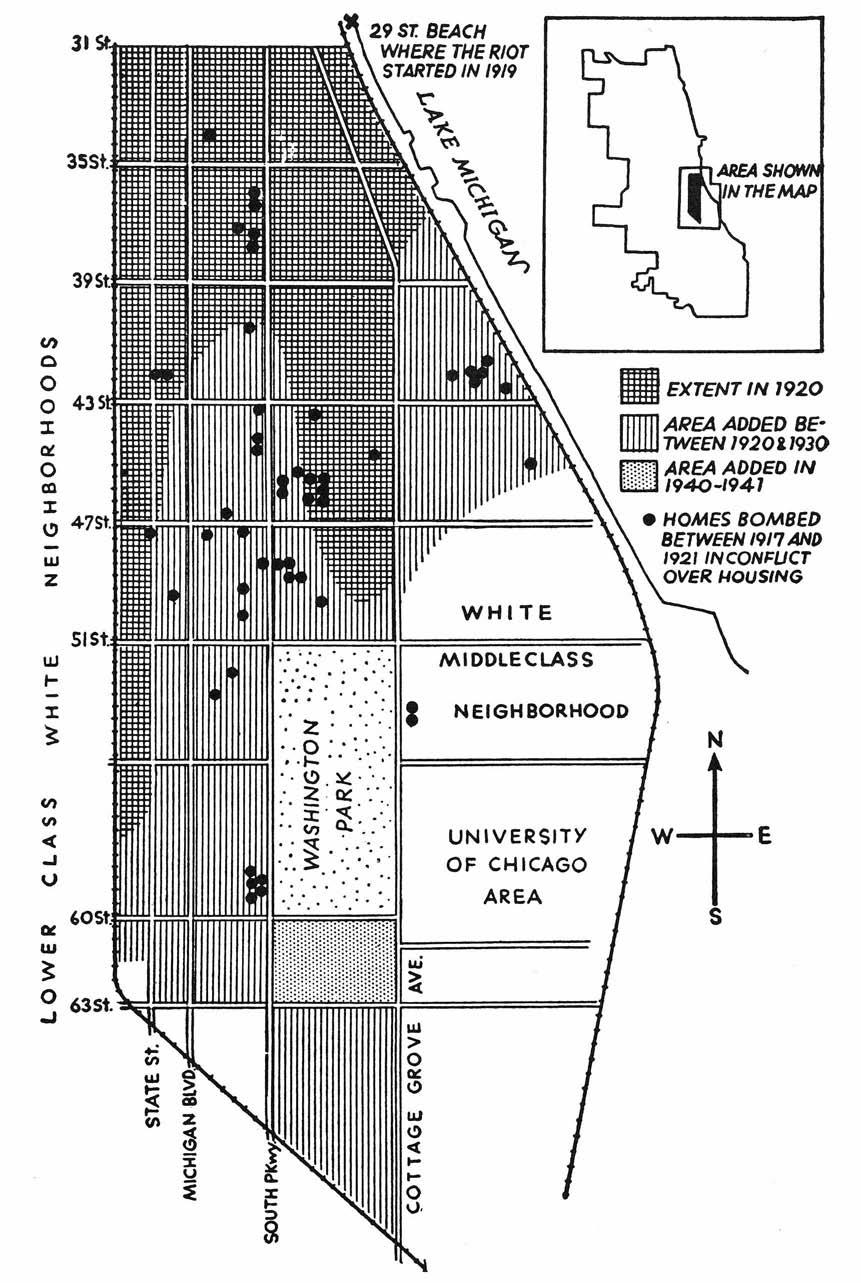
The Chicago Defender condemned the city’s segregated Black Belt and the restrictive covenants among property owners in areas adjacent to the University of Chicago.
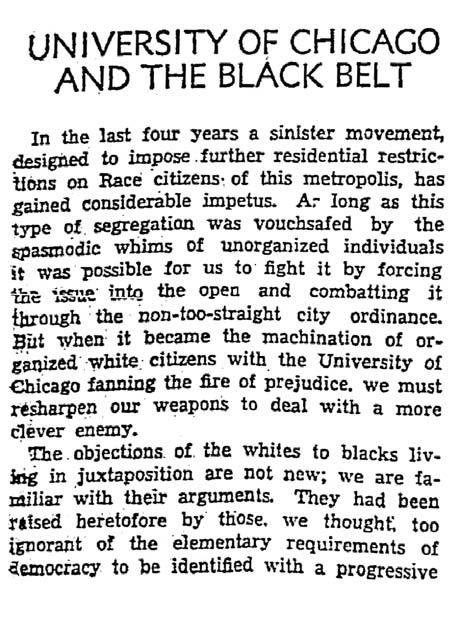
The chance for Hansberry, Hall, and Pace to buy property arose unexpectedly out of bickering and betrayal inside the Woodlawn Property Owners Association. Its executive secretary and prime conspirator in buttressing the covenant had been an individual named James Joseph Burke. He quit the association on March 1, 1937, in a dispute over—what else?—money. It was a bitter parting. According to the complaint the association filed against the Hansberry purchase, Burke resigned after, on various occasions, hurling threats at his erstwhile comrades. “I’m going to put niggers into twenty or thirty buildings in the Washington Park subdivision,” he was quoted as saying within four to six weeks before he left. “I will get even with the Woodlawn Property Owners Association by putting niggers in every block,” he declared on another occasion. “You property owners in the subdivision will soon have headaches.” And, he added, “I will get even with the Association and with certain directors of said Association if that is the last thing I do.”
He then “conspired,” according to the complaint, to sell the Rhodes Avenue property to Hansberry and the nearby building on Sixtieth Street to Pace. Indeed, a conspiracy existed, but it was a necessary conspiracy, intrigue aimed at righting a wrong.
As the youngest attorney, I was the junior partner on the legal team and got the most tedious job. For the covenant to be in force, it had to be signed by 95 percent of the home owners in the covered area. I spent much of the next year and a half working in the law library at City Hall in the Loop and at the nearby office of the Cook County Recorder of Deeds. Poring over legal descriptions of the property in the stacks at the law library, I transcribed, in my bad handwriting, the characteristics and boundaries of the plots in the subdivision. Then at the recorder’s office, I hunted up the deeds to the properties and compared the signatures on them to those on the covenant. It was a laborious, tiresome, boring task. Squinting to make out the signatures was hard on my eyes; days hunched over property records left my back aching, and copying reams of legal papers cramped my hand. But I wasn’t married at the time, so my time was my own, and although I wasn’t paid, expenses back then weren’t what they are today.
More important, the payoff was big. My long hours revealed that only 54 percent of the property owners actually had signed the covenant. We thought we had the stake to drive through the heart of this racial covenant. During the trial in circuit court, I spent almost ten days on the witness stand explaining my research, going over individual pieces of property to show that I had the goods on them.
But the white home owners’ association anted up what turned out to be an ace in the hole. Back in 1928, Burke had cooked up a fraudulent suit, a friendly legal action which maneuvered a circuit court judge into accepting the covenant as valid and binding. This was precedent, the judge in our case declared—despite the evidence I had presented, despite the fact that barely more than half of the required 95 percent of home owners had signed the covenant, and despite testimony from Burke that the 1928 action was the work of collusion. The legal term employed by the court was res judicata, meaning the issue had been decided, had been settled. We, of course, appealed.
Litigation is expensive. My best estimate is that Supreme Life pumped more than a hundred thousand dollars—a huge sum during the Depression—into fighting this case. But where did the money come from to pay the phalanx of attorneys representing the white home owners of this middle-class neighborhood?
The University of Chicago!
Dickerson, Mollison, and I—all graduates of the University of Chicago Law School—sought and got a meeting with university president Robert Maynard Hutchins, considered then and remembered today as a great liberal. We urged him to cut off university financing of the defense of the racist real estate contracts. He steadfastly refused.
“It’s a matter of economics,” he lectured us. “The university has a huge investment in the South Side, and I’ve got to protect it.”
As we pressed our case, he became increasingly irritated and finally blurted out, “Why don’t you people stay where you belong!”
“You people.” Hutchins would never say the word “nigger,” but the phrase “you people” carried the same message.
That was the end of the hope that the University of Chicago would step up to do the right thing. Yet, those words from this icon of progressive politics grated on me long after. In fact, some years later after I had gone to work for the War Department, I ran into my old Chicago Law School friend Ed Levi in Washington, where he was employed by the attorney general. I hadn’t seen him for several years, and as we exchanged pleasantries, the resentment over that insult bubbled up and I said, “Ed, why don’t you let Hutchins know we belong everywhere?” I think the vehemence of my feelings left him nonplussed. He muttered something about that’s how things are and isn’t that awful, and went on his way. Ed was a good man, but he didn’t know how to answer my anger.
As our case worked its way to the Illinois Supreme Court and then finally to the U.S. Supreme Court, I would occasionally see Hansberry, and I even had him as a client in a business matter—a deal that inspired another plotline in A Raisin in the Sun. In the play, the family matriarch comes into ten thousand dollars from an insurance policy paid on the death of her husband. There are competing interests within the family for the money. Her daughter wants part of it to attend medical school. The Sidney Poitier character is consumed with ambition to invest it in a liquor store with a couple of other men so he can become his own boss instead of serving out his life as a chauffeur to a white man. The mother says no, invests part of the money in a down payment on the house in the white neighborhood, and entrusts the rest to her son to deposit in the bank. He promptly takes the money to the acquaintance who is putting together the liquor store deal, and, of course, that man disappears with the money.
Hansberry, as I’ve noted, made a good living because he was an astute businessman. But like too many people, then and now, and like the Sidney Poitier character, he yearned for the surefire chance to make a killing. He socialized with the policy guys, which served only to feed his appetite for the fast buck. At the time oil exploration was recognized as a lucrative business, thanks to the ever growing popularity of the automobile and the ever increasing incorporation of the internal combustion
Hansberry and Pace took their fight against restrictive covenants to the Illinois State Supreme Court in 1939. Earl B. Dickerson and Truman K. Gibson Jr. led their legal team.
Gibson recalls that University of Chicago president Robert Maynard Hutchins (above) refused to stop university financial support of the racist real estate contracts.

Gibson’s law office was in the Supreme Liberty Life Building on Thirty-fifth Street. engine into American industry. Speculation in petroleum wells was rampant. Today, we think of oil as an asset of the American Southwest and the Middle East. However, oil drilling first made fortunes in Pennsylvania, and oil had been struck in downstate Illinois.
Now, a couple of businessmen named Horne and Faulkner (I’ve forgotten their first names) persuaded Hansberry and several other men to invest in the mineral rights to land in Centralia, Illinois, that they touted as oil

fields likely to produce a bonanza for those bold enough to cough up the money for exploratory drilling. Hansberry and the others bought it hook, line, and sinker. One weekend we drove down to Centralia, and they spent hours gazing at the property, walking around it, and imagining oil derricks pumping black gold out of the ground, their heads filled with visions of oil dollars gushing out of the rich agricultural dirt of central Illinois. Naturally, the upshot was that Hansberry’s property produced about two teaspoons of oil, and Horne and Faulkner skipped town with his money and that of the other investors. Like the Poitier character, they had been cheated by a couple of sharp guys preying on others’ hunger for quick riches. Fortunately, no one had invested his life savings in this scheme.
It’s an ill wind that blows no good; my law partner Mollison also put some money in this scheme. His property turned out to be a drainage ditch running by the socalled oil field, so it looked like he had got the worst deal of all. However, his drilling operation actually struck oil, and, while its production didn’t make him an oil baron, the well produced enough petroleum for him to earn a good return on his investment. His success prolonged the hope of the other investors but to no avail.
Horne and Faulkner had had offices next to mine in the Supreme Life building at Thirty-fifth Street. They had fooled me, too, but fortunately, I had not invested in their oil scheme.
Not too long after the oil scheme fizzled, on October 15, 1939, the Illinois Supreme Court rendered its decision on our appeal. The ruling began with a lot of flowery praise for the briefs presented by both sides. They were “very studiously prepared,” were read by the justices “with the greatest interest and enjoyment,” were appreciated for the quality of the “language employed,” and some of their arguments were regarded as “almost classical.” For us, the justices no doubt intended that fulsome and condescending praise to soften the blow to come. They rejected our appeal, declaring that res judicata indeed applied. Incredibly, the court found that the stipulation resulting from the contrived lawsuit was untrue but ruled that the sweetheart deal was not fraudulent or collusive.
We took our case to the United States Supreme Court. The high court heard arguments October 25, 1940. We traveled to Washington several days ahead of that to prepare. As I said, I wasn’t being paid, so I stayed with Robert Ming, a law professor at Howard University and a close friend who had managed to graduate at the top of his class from the University of Chicago Law School even though he spent his last year presiding over a blackjack game rather than in class.
Two nights before the arguments to the high court, we laid out our case to sixty students and faculty members at Howard in an auditorium on campus. Listening and questioning us were some of the best minds in America’s black intelligentsia. William Hastie, a man who was to play such an important role in my life and who had become the first black federal judge, was dean of Howard’s Law School. Others from the faculty included Jim Nabrit Sr., a top graduate of the Northwestern University Law School and later president of Howard; Bernard Jefferson, a recent graduate of Harvard who would become a distinguished judge in California, and

In 1940, three years after Dickerson filed the initial suit, the United States Supreme Court finally overturned the Illinois Supreme Court’s decision. The Court ruled that “the property owners agreements barring Negroes from residing in an area . . . are non-existent.”
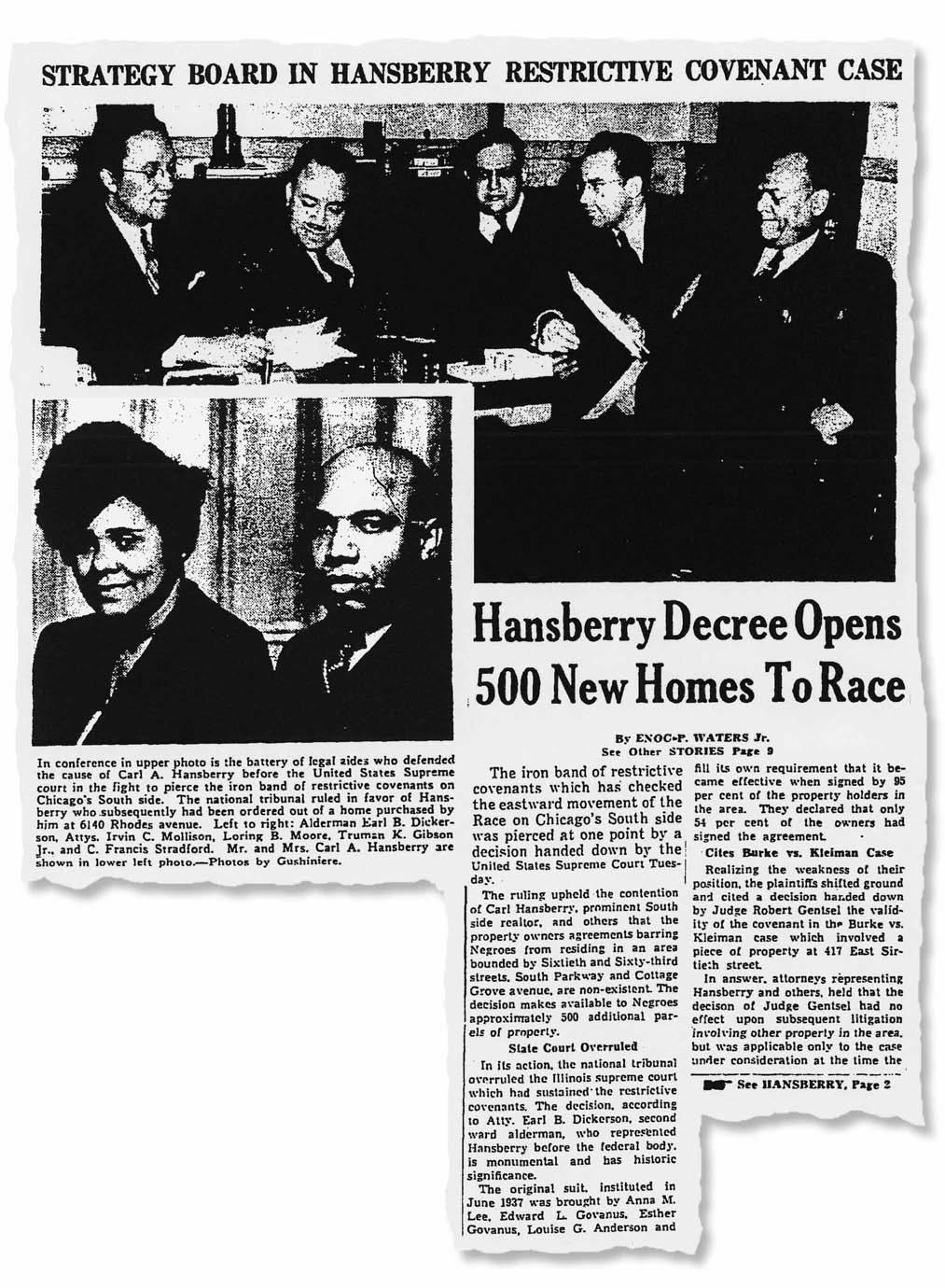

In 1943, Carl Hansberry published this guide to help other African Americans enter the business world.
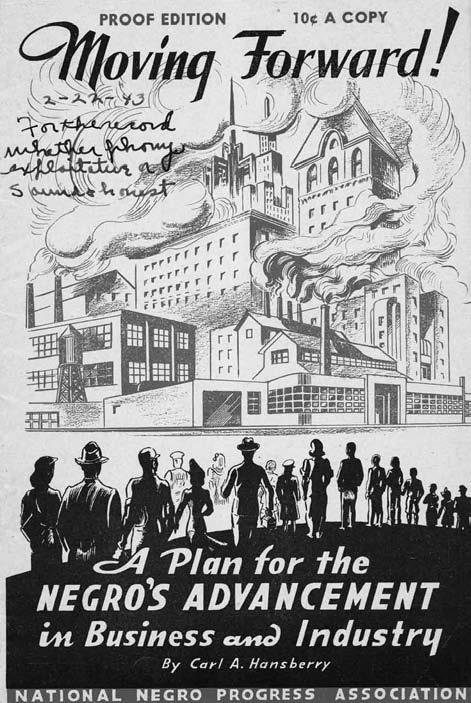
my old friend Bob Ming. Bill Hastie was an intense questioner. His time in Chicago enabled Nabrit to pose especially detailed and relevant questions.
The rehearsal went on for three or four hours. Dickerson recited his oral argument. Back in Chicago, we had gone over it countless times, looking for weak logic, revising and refining our legal reasoning, and polishing the phrasing and structure of our argument. The audience was clearly impressed.
I took the stage to explain the research on the covenant’s signers that I had done and fielded all manner of probing questions.
Before we could present our case to the U.S. Supreme Court, we had to be admitted to its bar. The morning before our case was to be heard, Mollison, Moore, Dickerson, and I showed up for the swearing-in ceremony. Of course, I had never visited the court before. We were among a troop of attorneys who marched into the courtroom in late morning to be formally sworn in. Our hearts were fluttering. I was awed by the majesty of the courtroom, the bench, and the justices themselves. We were in quite a daze and didn’t say anything but yes when called upon by the presiding justice.
Finally, with the next day came the main event. Mollison, Moore, and I took our seats while Dickerson assumed the lectern. He was the supreme egotist who didn’t suffer fools gladly. But that day he proved beyond a shadow of a doubt that his own high opinion of himself was richly deserved. To say that Dickerson did extremely well is an understatement. He made his presentation with aplomb, forcefully advancing our arguments and agilely responding to the challenging questions from several of the justices.
Ours was a three-pronged attack: the concept of the covenant denied equal protection of the law guaranteed by the Fourteenth Amendment, the Washington Park subdivision covenant was invalid because of the inadequacy of the signatures, and res judicata did not apply because the suit on which it was based was a trumped-up affair.
The pattern of questioning, led by Justice James McReynolds from Tennessee, avoided the conceptual argument and focused on the technical questions of res judicata, signatures, and the sanctity of contracts. The high-priced Loop attorneys representing the Woodlawn Association and funded by the University of Chicago, led by McKenzie Shannon, also came under sharp questioning.
The defeat of the Woodlawn real estate contract inspired other actions against racially restrictive covenants, including this downtown conference in 1946.
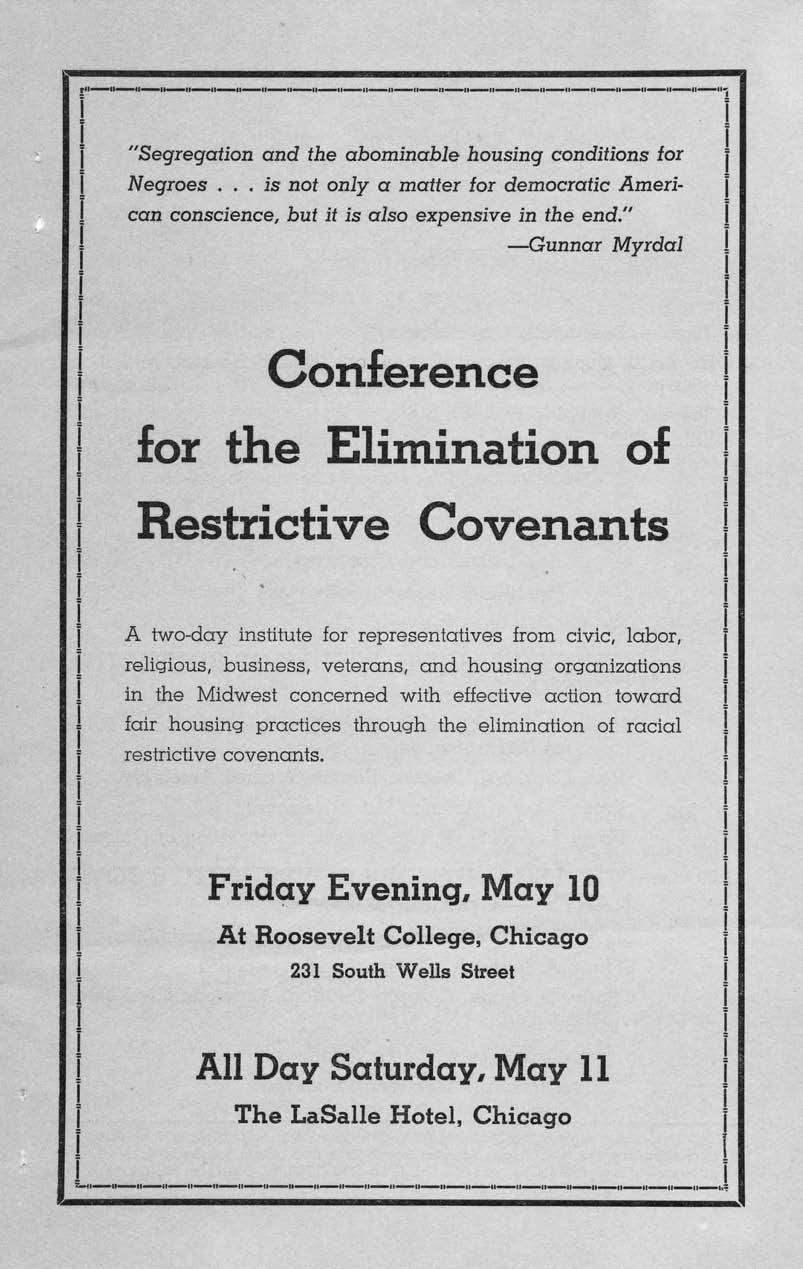
The questions were precise, addressing specific legal issues of contract, but the experience was not intense. The justices listened attentively. After our hour-long presentation, we walked away convinced that Dickerson had done a fine job in articulating our case, though of course we had no way of knowing how it had played with the court. We retired to Ming’s apartment to replay over and over the day’s events and to unwind by playing a little poker.
As it turned out, we had to wait only three weeks for a decision. A quick ruling from the U.S. Supreme Court was very unusual. Normally the justices considered an issue for months, typically hearing a case in the fall and rendering opinion in late May. A decision after only three weeks was surprising. The results, however, showed that the court wasn’t ready to tackle the constitutional issues we presented regarding Fourteenth Amendment protections and wanted only to concentrate on the technical issues.
Still, the result was a vindication of my research, the big payoff for those hours, days, weeks, and months spent stooped over deeds and property descriptions. Knocking down the case for res judicata, the justices declared that no one was bound by the contrived lawsuit and that because my research showed that only 54 percent—not 95 percent—of the home owners had signed the covenant, no restriction was in force. The ruling—while short of a landmark decision outlawing all such contractual language, which had to wait for cases from Michigan and Missouri in 1948—was a resounding victory. It meant that each challenge to the covenant, that each contested sale of a home, had to be litigated individually—a stipulation that made it economically impossible to defend the Washington Park subdivision contracts.
Hansberry and his family at long last could move into their new home. The decision had an immediate and profound impact, igniting one of the first waves of the white flight phenomenon that was to plague Chicago and other urban centers for decades to come. White families panicked and pushed their homes onto a crowded market and sold them cheaply. Black real estate speculators made a killing. I represented Claude Barnett, director of the Associated Negro Press. He bought three buildings and confided to me that they were the best investments he had ever made because they came at so little cost.
Ironically, Hansberry didn’t live very long at the house he had waged such a long legal battle to acquire. After his wife died, he moved to Mexico in the 1940s. But even before that I had lost touch with him. Word of the Supreme Court’s decision reached me while I was fighting a lawsuit in Cook County Circuit Court. If there was a celebration dinner or party for Hansberry, Dickerson, and the others, I am unaware of it.
I did write to the University of Chicago president Hutchins declaring, “We belong in the Washington Park subdivision. The Supreme Court says so.” He didn’t respond.
After racially restrictive covenants were lifted, some African American businessmen, including Associated Negro Press director Claude Barnett (above), made successful investments in real estate.

ILL USTRATIONS | 26, ICHi-39786; 27 top left, ICHi39781; 27 bottom left, from The Chicago Defender, February 2, 1959; 27 right, “Young Woman from Chicago Does Hit Play” by Roi Ottley, copyrighted February 14, 1959, Chicago Tribune Company. All rights reserved; 28, from The Negro in Chicago, Chicago Commission on Race Relations (University of Chicago Press, 1922); 29, ICHi-25571; 30, ICHi-39785; 31 top, from The Chicago Defender, August 1, 1936; 31 bottom, ICHi-39784; 32, ICHi-23193; 33, from Woodlawn Property Owners Association records, 1922–34, CHS; 34, adapted from map in The Negro in Chicago, Chicago Commission on Race Relations (University of Chicago Press, 1922); 35, from The Chicago Defender, July 24, 1937; 36, from The Chicago Defender, February 25, 1939; 37, ICHi-39782; 38–39, ICHi-39783; 40, from The Chicago Defender, November 23, 1940; 41, from Moving Forward! A Plan for the Negro’s Advancement in Business and Industry by Carl A. Hansberry, 1943, CHS; 42, Conference for the Elimination of Restrictive Covenants by the Chicago Council against Racial and Religious Discrimination, 1946, CHS; 43, ICHi-18378.
FOR FURTHER READING | The Chicago History Museum Research Center contains several volumes on racially restrictive convenants, including Racial Restrictive Covenants by Bernard J. Sheil and Loren Miller (Chicago Council Against Racial and Religious Discrimination, 1946); Proceedings from the 1946 Conference for the Elimination of Restrictive Covenants (Chicago Council Against Racial and Religious Discrimination); Restrictive Covenants by the Federation of Neighborhood Associations (Chicago: The Federation, 1944); and People vs. Property: Race Restrictive Covenants in Housing by Herman H. Long and Charles S. Johnson (Nashville: Fisk University Press, 1947).

